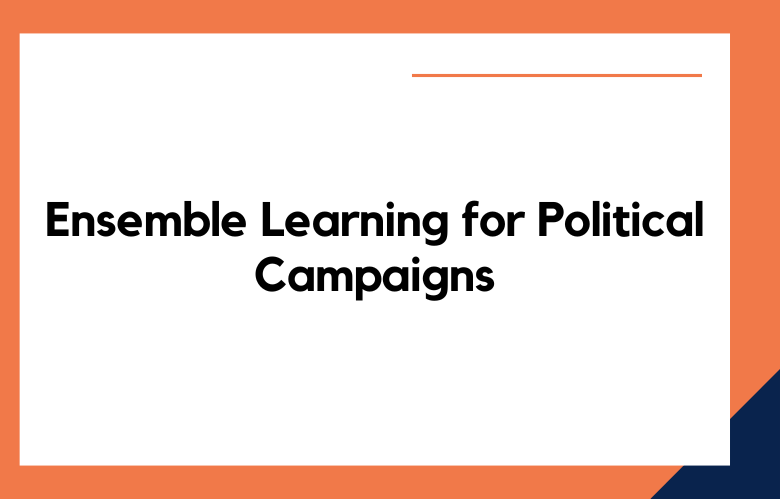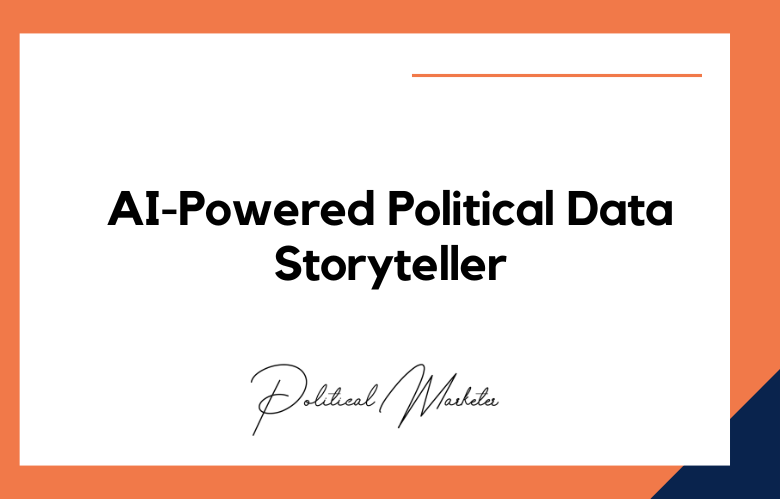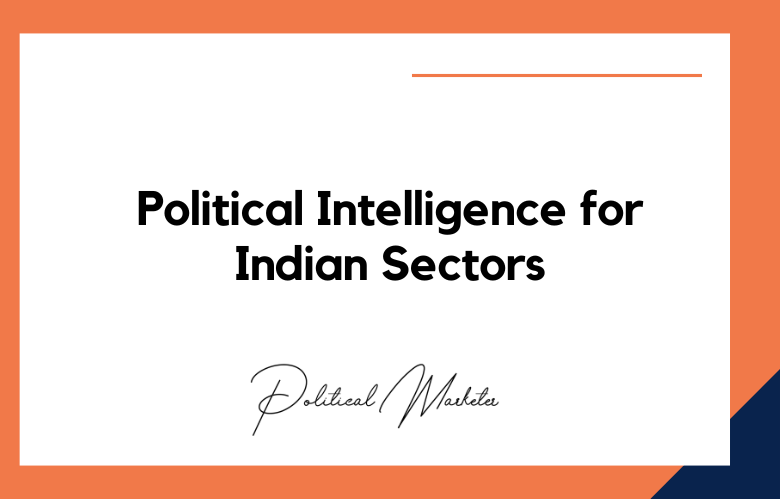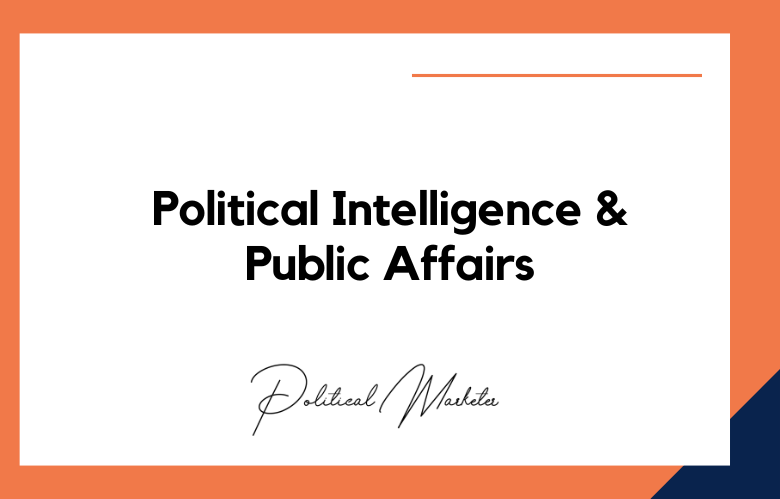Ensemble learning represents a transformative approach in political campaigns. It leverages the collective power of multiple machine-learning models to enhance predictive accuracy and decision-making.
In the intricate world of political campaigning, where understanding voter behavior and sentiment is paramount, ensemble learning offers a robust methodology to synthesize diverse data sources and analytical models, from voter demographics and historical voting patterns to real-time social media sentiment.
Ensemble Learning for Political Campaigns: New Frontiers
This advanced technique involves combining the predictions from various models to improve the reliability and accuracy of outcomes, such as voter turnout predictions, identification of key voter issues, and optimization of campaign messages.
By aggregating insights from different models, ensemble learning reduces the risk of overfitting and the potential biases inherent in single-model approaches, leading to more nuanced and reliable predictions.
Applying ensemble learning in political campaigns allows strategists to harness the strengths of different algorithms, whether they be decision trees’ interpretability, neural networks’ predictive power, or gradient-boosting machines’ precision.
This multifaceted approach enhances the depth of analysis and provides a more flexible and adaptable framework for responding to political landscapes’ dynamic nature.
However, successfully implementing ensemble learning in political campaigns requires careful consideration of model selection, data quality, and the interpretability of combined predictions. This underscores the importance of ethical considerations and transparency in the use of advanced analytics in political contexts.
By embracing ensemble learning, political campaigns can unlock more sophisticated and practical strategies, driving targeted engagement and informed decision-making that resonates with the electorate while navigating the complexities and responsibilities inherent in political data analytics.
- Understanding Ensemble Learning
- Ensemble Learning in Political Campaigns
- Benefits of Ensemble Techniques
- Real-World Campaign Success Stories
- The Good, Bad, and Ugly of Political AI
- Combatting Bot Attacks in Politics
- Navigating the Dark Side of Political AI
- Ensuring Democracy Through Human-Centered AI
- Future of AI in Political Campaigns
- Final Remarks
- Frequently Asked Questions
- What is Ensemble Learning, and how is it relevant to political campaigns?
- How can Ensemble Learning benefit political campaigns?
- Can you provide examples of successful real-world political campaigns that utilized Ensemble Learning?
- What are some challenges associated with using AI in political campaigns?
- How do human-centered AI approaches contribute to ensuring democracy in political campaigns?
Have you ever wondered how political campaigns, with the help of machine learning techniques, can benefit from the power of collaboration and diversity in decision-making? Ensemble learning for political campaigns, utilizing vast amounts of data to target voters effectively, might be the game-changer you’ve been seeking.
This approach amplifies accuracy and prediction capabilities by combining multiple models, paving the way for more effective strategies. Imagine harnessing the collective intelligence of diverse algorithms and machine learning techniques to navigate the complexities of campaign dynamics, ads, voters, and voter behavior.
Are you ready to revolutionize your campaign tactics with ensemble learning ads? This post reveals how this innovative technique can elevate your political endeavors.
Key Takeaways
- Utilize Ensemble Learning: Apply ensemble learning techniques in political campaigns to improve prediction accuracy and decision-making processes.
- Draw from Real-World Successes: Learn from successful political campaign stories where ensemble techniques have led to better outcomes and strategic decisions.
- Be Mindful of Ethical Implications: Understand the ethical considerations surrounding the use of AI in politics, balancing benefits with potential drawbacks.
- Stay Vigilant Against Bot Attacks: Implement strategies to combat bot attacks in political campaigns, safeguarding the integrity of the democratic process.
- Prioritize Human-Centered AI: Ensure AI applications in political campaigns prioritize human values, transparency, and accountability for a more democratic approach.
- Embrace the Evolution of AI: Embrace the evolving landscape of AI in political campaigns, adapting to new technologies and methods for more effective campaigning strategies.
Understanding Ensemble Learning
Definition
Ensemble learning involves combining multiple models to enhance prediction accuracy. It leverages the wisdom of crowds.
Ensemble learning aggregates predictions from various models for a more accurate final prediction.
How It Works
Ensemble learning models can be diverse, such as decision trees, neural networks, or support vector machines.
By diversifying models, ensemble learning reduces errors and improves overall performance significantly.
Importance of Diversity
The diversity among models is crucial in ensemble learning. It ensures that each model contributes unique insights.
Diverse models help counteract biases and errors in individual models, leading to more reliable predictions.
Ensemble Learning in Political Campaigns
Voter Sentiment Analysis
Ensemble learning techniques are increasingly applied in political campaigns to enhance voter sentiment analysis. Combining multiple statistical algorithms offers a more accurate understanding of individual voters‘ preferences and behaviors. This approach helps campaign strategists tailor their messages effectively.
Election Outcome Prediction
Utilizing ensemble methods in political campaigns allows for integrating diverse data sources, leading to more robust election outcome predictions. By aggregating insights from various models, analysts can gain a comprehensive view of the electorate’s dynamics and make informed decisions based on this information.
Campaign Strategy Optimization
One significant benefit of employing ensemble learning in political campaigns is optimizing campaign strategies. By fusing different algorithms and models, campaign managers can identify patterns, trends, and hidden correlations that might go unnoticed with single-model approaches. This holistic view enables them to refine their outreach efforts efficiently.
Benefits of Ensemble Techniques
Increased Accuracy
Ensemble techniques combine multiple models to boost predictive accuracy by averaging individual errors.
By leveraging the strengths of diverse models, ensemble learning achieves higher accuracy than standalone models.
Bias Mitigation
Ensemble methods help reduce biases inherent in individual models by aggregating predictions from various sources.
Through a democratic process of combining different model outputs, ensemble learning minimizes the impact of biases.
Handling Complex Relationships
Ensemble techniques excel at capturing intricate relationships within political data that might be challenging for single models.
Real-World Campaign Success Stories
Improved Outcomes
Political campaigns worldwide have embraced ensemble learning techniques to enhance their strategies. By utilizing a combination of diverse models, campaigns can precisely target specific voter segments, leading to improved outcomes. For instance, in the 2020 US presidential election, several campaigns leveraged ensemble methods to analyze voter behavior and tailor ads accordingly.
Campaigns that incorporated ensemble learning witnessed a significant boost in their effectiveness. By aggregating predictions from multiple models, they could identify key issues that resonated with different voter groups. This approach enabled them to craft personalized messages that appealed to a broader audience base, resulting in higher engagement rates and ultimately positively influencing voting decisions.
Efficient Resource Allocation
One notable success story is from a local election campaign in Europe. The campaign team optimized its resource allocation strategy by implementing ensemble learning algorithms. Through ensemble techniques, they accurately predicted which areas required more attention and allocated resources accordingly. As a result, they maximized their outreach efforts and significantly improved voter turnout in those regions.
The impact of ensemble learning on campaign efficiency cannot be overstated. Instead of relying on traditional one-size-fits-all approaches, campaigns can tailor their strategies based on granular insights derived from diverse models. This targeted approach optimizes resource allocation and ensures that every campaign effort is directed towards activities that yield the highest impact.
Enhanced Voter Engagement
In another example, a mayoral candidate utilized ensemble learning to analyze social media data and better understand voter sentiment. By identifying patterns in online conversations, the candidate’s team could tailor their messaging to address specific concerns raised by voters. This personalized approach resonated with the electorate, leading to increased ad engagement and fostering a sense of connection between the candidate and the voters.
The Good, Bad, and Ugly of Political AI
Positive Impact
Political AI has revolutionized campaign strategies by enhancing data analysis to effectively target specific voter demographics. It allows for personalized messaging tailored to individual preferences, increasing engagement and support.
AI-powered tools such as sentiment analysis help campaigns gauge public opinion accurately, enabling them to adjust their messaging in real time based on feedback. This dynamic approach significantly improves the efficiency of communication with voters.
Negative Implications
However, the misuse of AI in political campaigns can lead to misinformation and manipulation. By leveraging AI algorithms to spread false narratives or create deepfake videos, campaigns can deceive the public and sway opinions through deceitful means.
Moreover, the use of AI in generating targeted disinformation poses a significant threat to the democratic process. It can amplify existing biases and polarize communities by reinforcing divisive narratives rather than fostering constructive dialogue.
Ethical Considerations
The ethical considerations surrounding the use of AI in politics are paramount. Campaigns must ensure transparency in collecting and utilizing data to maintain trustworthiness with voters. Respecting privacy rights and safeguarding against potential breaches is crucial in upholding ethical standards.
Furthermore, regulations that govern the ethical deployment of AI in political campaigns are urgently needed. Establishing clear guidelines on data usage, algorithm transparency, and accountability mechanisms can mitigate the risks associated with unethical practices.
Combatting Bot Attacks in Politics
Detection Strategies
Detecting fake accounts is crucial in combating bot attacks in politics. Suspicious accounts can be identified by analyzing account activity patterns and content engagement.
Machine learning algorithms are pivotal in identifying and neutralizing malicious bot activities. These algorithms can analyze vast amounts of data to pinpoint anomalies indicative of bot behavior.
Mitigation Techniques
Implementing strict verification processes for account creation can help prevent the proliferation of fake accounts. Monitoring and flagging suspicious activities in real-time are effective mitigation techniques.
Successful interventions against bot-driven disinformation campaigns have showcased the power of collaborative efforts between tech companies, governments, and cybersecurity experts. By sharing intelligence and resources, these entities can collectively combat bot attacks.
Examples of Interventions
- Facebook’s initiative to remove millions of fake accounts during elections demonstrates the impact of proactive detection strategies.
- Implementing CAPTCHA verification systems by various platforms has significantly reduced bot-generated spam and misinformation.
Navigating the Dark Side of Political AI
Algorithmic Manipulation
AI in political campaigns can manipulate public opinion through targeted messaging and misinformation. Such tactics exploit vulnerabilities in human psychology, influencing voter decisions without their awareness.
Threats to Democratic Processes
AI’s insight can be weaponized to spread disinformation, undermining the integrity of elections. Voter influence is at risk as individuals are exposed to tailored content that distorts reality and skews perceptions.
Regulatory Measures
To safeguard democratic principles, regulatory frameworks must be established to monitor and control the use of AI in politics. These measures ensure transparency, accountability, and ethical practices in leveraging technology for electoral campaigns.
Ensuring Democracy Through Human-Centered AI
Ethical Implementation
AI in political campaigns must prioritize democracy by ensuring human oversight and ethical practices. By incorporating people-centric approaches, we can uphold democratic values.
Harnessing the power of AI with a focus on human-centered design ensures that technology serves the citizens rather than manipulates them. This approach involves transparency, accountability, and safeguarding privacy rights to protect the integrity of democratic processes.
Empowering Citizen Participation
AI can empower citizens by providing accurate information, enabling them to make informed decisions during political campaigns. Through accessible platforms and unbiased data analysis, individuals can actively engage in discussions and contribute meaningfully to the democratic discourse.
Citizens play a crucial role in shaping the future of their countries through their participation in political campaigns. With AI tools prioritizing democracy and people, individuals can voice their opinions effectively and influence policy decisions.
Oversight for Responsible Use
Human oversight is essential in utilizing AI for political campaigns to ensure responsible and ethical use. Experts can mitigate biases and prevent the misuse of AI technologies in influencing public opinion by monitoring algorithms, verifying data sources, and scrutinizing outcomes.
The integration of human oversight mechanisms guarantees that AI remains a tool for enhancing democracy rather than manipulating or coercing voters. This approach fosters trust among citizens and reinforces the principles of transparency and fairness in political processes.
Future of AI in Political Campaigns
Advancements in Predictive Modeling
AI is revolutionizing political campaigns with future outcomes by enhancing predictive modeling techniques. Through machine learning algorithms, AI can analyze vast amounts of data to predict voter behavior accurately.
These advancements enable campaigns to leverage machine learning techniques to identify trends and patterns that traditional methods might overlook. Using AI, political strategists can make data-driven decisions for more effective campaign strategies.
Personalized Campaign Messaging
Integrating AI-powered tools in political campaigns opens up possibilities for personalized messaging and outreach. With AI’s capabilities, campaigns can tailor messages based on individual preferences and behaviors.
By harnessing the power of AI, political campaigns can create targeted communication strategies that resonate with specific voter segments. This personalized approach enhances engagement and fosters stronger connections between candidates and voters.
Implications for Future Electoral Strategies
The evolving landscape of political AI has profound implications for future electoral strategies. As AI advances, campaigns will rely more on data-driven insights to shape their approaches and decision-making processes.
AI’s role in political campaigns is not just limited to predictive modeling but also to optimizing resource allocation, identifying key issues, and understanding voter sentiments. Integrating AI in electoral strategies marks a significant shift towards more efficient and strategic campaigning.
Final Remarks
Ensemble learning into political campaigns can revolutionize decision-making processes, enhance strategy formulation, and boost overall campaign effectiveness. By leveraging the power of multiple algorithms, you can gain a more comprehensive understanding of voter behavior, fine-tune messaging strategies, and predict outcomes with greater accuracy. The benefits of embracing ensemble techniques in political AI are vast and impactful, offering you a competitive edge in navigating the complex landscape of modern elections.
As you delve into the future of AI in political campaigns, remember that staying informed about the latest advancements and ethical considerations is crucial. Embrace human-centered AI approaches to ensure transparency, fairness, and accountability in your campaign endeavors. By harnessing the potential of ensemble learning responsibly, you can contribute to a more informed electorate and uphold the principles of democracy in the digital age.
Frequently Asked Questions
What is Ensemble Learning, and how is it relevant to political campaigns?
Ensemble Learning combines multiple machine learning models to improve predictive performance. In political campaigns, it helps analyze diverse data sources for more accurate insights, aiding in strategic decision-making.
How can Ensemble Learning benefit political campaigns?
Ensemble techniques enhance the accuracy and robustness of predictive models in analyzing voter behavior, sentiment analysis, and campaign strategy optimization. This leads to more effective targeting and messaging for better campaign outcomes.
Can you provide examples of successful real-world political campaigns that utilized Ensemble Learning statistical algorithms?
Several political campaigns have leveraged Ensemble Learning for voter segmentation, issue prioritization, and resource allocation. By combining various models effectively, these campaigns achieved higher engagement rates and improved electoral results.
What challenges are associated with using AI, machine learning techniques, and statistical algorithms in political campaigns?
One significant challenge is combating bot attacks that spread misinformation or manipulate public opinion. Ensuring transparency, ethical use of AI, and implementing security measures are crucial to maintaining the integrity of democratic processes.
How do human-centered AI approaches contribute to ensuring democracy in political campaigns?
Human-centered AI prioritizes ethical considerations, fairness, and accountability in algorithmic decision-making processes. Focusing on human values and rights helps mitigate biases, promote transparency, and safeguard democratic principles in political campaigning.











